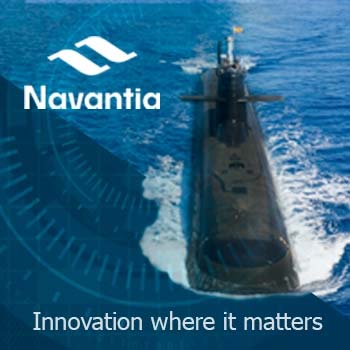Washington: Marines and Soldiers operating manned missile batteries are vulnerable to counter-battery fire once they fire their systems, which are highly visible to enemy sensors. Autonomous, driverless systems can counter this threat, which is multidimensional.
“Counter-battery fire is a real problem,” said Scott Sanders, former Marine Special Operations Officer and chief growth officer for Forterra. “I would not want to be next to anything that fires a weapon system in modern combat like a HIMARS battery or anti-ship missile.
“If you don’t move fast enough and end up taking counter-battery fire from a ship, you’ve lost not only millions of dollars in hardware but the Marines who are in it and who will be much harder to replace than hardware. It would be huge to get humans away from those vehicles and platforms.”
In those very real scenarios, what’s needed are mobile launch systems that can fire and actually be on-the-move even before a Navy/Marine Corps Expeditionary Ship Interdiction System (NMESIS) missile, for example, strikes its target.
Field-based artillery teams operating those systems are already trained like NASCAR pit crews. However, our adversaries’ advanced capabilities in the electromagnetic spectrum still make them vulnerable and targets before they can get away. The solution is bringing autonomy to those platforms so they can manoeuvre and fire faster than any crewed system could, while keeping operators safe at standoff distances.
Sanders said it simply: “Robots can displace faster and there is less risk to force if they are hit by enemy fire.”
In addition to the life-saving impact of standoff capability, autonomous systems address multiple use cases related to: counterterrorism and counterinsurgency; search and rescue; route clearance; logistics and supply; explosives ordnance disposal; surveillance and reconnaissance; urban warfare; critical infrastructure and base protection; chemical, biological, radiological, nuclear (CBRN) threats; anti-access/area denial (A2/AD) environments; and border security.
The use cases for autonomy also extend to all systems that emit electronic signatures like radar and other sensors that can be detected. There’s a reason the AGM-88 HARM (High-speed Anti-Radiation Missile) is stockpiled by the US Marines, Navy, and Air Force, as well as more than a dozen countries around the world.
Any active radar system is easy to find on the battlefield because they stand out in the electromagnetic spectrum, so you’re inducing a lot of risk every time one lights up. Driverless, robotic ground systems counter counter-fires by letting the USMC and others project more firepower and sensing capability forward without risking Marines or Soldiers.
Presently, Forterra is executing the first successful deployment of self-driving systems for the Marine Corps’ Remotely Operated Ground Unit for Expeditionary (ROGUE) Fires under the Navy Marine Expeditionary Ship Interdiction System program (NMESIS). Built on an unmanned ground vehicle platform, ROGUE Fires abets ground-based anti-ship missile operations.
Raksha Anirveda's editorial desk team brings in the collective experience of creative professionals - a fine mix of senior copy editors, writers, proofreaders and designers. Working as a team, they continuously create, manage, and curate content to sustain the magazine's profile and reputation in line with market trends and achieve magazine's goal.
















